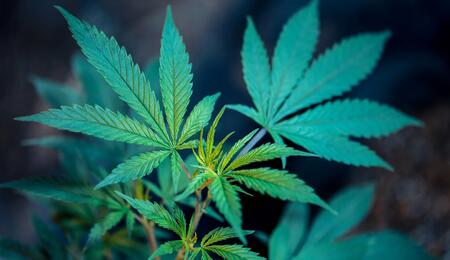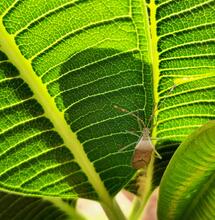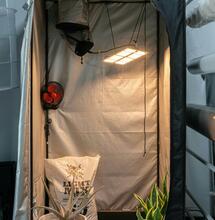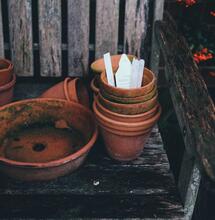How to Grow Organically

The production of organic raw material is nowadays hot in almost all industries focused on making edible products. One could say that a certain part of Western society is trying to go back to the roots by taking an interest in what people consume and how this food was grown and processed. Cannabis and cannabis-based products are no exception. So let’s take a look at organic growing.
What Does Organic Growing Mean?
Some say that products labeled as “bio” or “organic” cost at least twice as much as products with no such label. While there is some truth to that, the number of customers who are willing to pay higher prices is rising fairly quickly. The result is that producers and sellers are actively trying to get their products labeled as “bio” or “organic” to increase their profits. That’s perfectly normal. However, this behavior leaves some space for deception and labeling regular products as “bio”. In case of this article, we obviously don’t want to deceive ourselves nor anyone else. Let’s make clear what organic growing means to us. It’s essentially a method of growing in which organic materials of plant or animal origin are used during all the phases, from planting the seed to harvest. Mineral fertilizers, chemical pesticides or nutritional supplements containing non-organic materials must not be used. The growing medium may include inorganic materials, such as sand, perlite, or expanded clay. Both organic fertilizers and growing media may be processed and modified by humans. This means that, for the purpose of organic growth, we don’t necessarily need to use only materials freely available in nature. [caption id="attachment_6560" align="alignnone" width="500"] Organic buds.[/caption] To give an example of what organic growth looks like, let’s say we have our very own compost to which we regularly add food leftovers and mown grass. We also mix it with soil with zero mineral fertilizer and pesticide content. We plant one cannabis seed into this growing medium and the seed grows into a plant. Throughout this plant’s life, we use only commercially available organic fertilizer or our own homemade plant and animal fertilizers. In order to prevent and eradicate all diseases and pests, we use biopreparations or mechanical traps. We may also grow clones organically. In order for the process to be 100% organic, though, we should make sure that the clones come from mother plant that has also been grown organically. However, it’s often impossible to know for sure, especially if the clones come from someone else’s mother plant. Considering how long the period between planting the clones and harvesting mature plants is, though, I believe that the yield from clones whose “mother” has been grown conventionally (non-organically) can also be considered organic.
Benefits of Organic Growing
I personally believe that the main benefit of “bio” growing lies in the fact that it is environmentally friendly and that it doesn’t create anything nature would not be able to deal with. When growing organically, we can – after harvest – dump the growing medium onto the compost or leave it anywhere outside without causing any kind of imbalance or undesirable pollution. This applies to both indoor and outdoor growing. Another major benefit is the fact that what doesn’t harm nature doesn’t harm people either. If we use only organic materials to grow our plants, we can be sure that no unnecessary chemicals or pesticide poisons would enter our bodies. Thanks to organic growing, we can also give our plants a better taste and smell. Many cannabis growers and users can attest to this. Organically grown weed is of a different quality, simple as that. Not everyone agrees with this conclusion, though. Some growers claim that when grown right, the taste and smell of conventionally grown cannabis is at least comparable to organic counterparts. I believe that it depends on the grower. Not everyone is able to grow great-tasting weed organically. The same goes for conventional growing. Still – according to my personal experience, organically grown ganja smells and tastes different.
Growing Medium for Organic Growing
Now let’s get to work. In order to start growing organically, we need an organic growing medium. What kind of growing medium to chose depends on where and how we want to grow. If we want to grow plants in pots under artificial light, or on the balcony, terrace, backyard or on a window sill, I would recommend buying an organic growing medium in a hobby store. This way we make sure that our growing medium is well mixed and that the plants in all pots will grow in the same environment with the same nutrient ratio. The nutrients contained in organic growing media are typically acquired from peat, guano, and other plant and animal products. Shopping assistants are usually happy to assist with choosing the right organic growing medium. [caption id="attachment_6561" align="alignnone" width="500"] Opium by Paradise Seeds, feeded organically of course. Source: Paradise Seeds[/caption] When growing organically, we should try to produce as little waste as possible. This is why we’re not going to use highly popular rockwool cubes, because rockwool itself is waste, which is not exactly easy to dispose of. Instead, we let our clones or seeds take roots or germinate in peat or coconut pellets. If there’s enough space for outdoor growing and it is possible plant into the ground, we have a great opportunity to provide our plants with ideal environment while working with natural sources only. But we have to be able to reach them. Provided we dispose of our own soil and can get our hands on some cow or horse manure and a bit of straw, then we’re set. First, dig out a large hole (the larger the better) and dump the horse or cow manure in it (a layer of about 10–20 centimeters / 4–8 inches). Then mix ordinary soil with manure in 1:1 ratio and add some straw. This will make the soil more permeable and allow the roots to get enough oxygen. The ideal soil is pretty light and sandy. Now throw a layer of straw on the bottom layer of manure. Then fill the hole up with the mixture of manure and soil. This kind of soil allows for the growth of large plants. Experienced gardeners who maintain their own compost will be able to work with their own organic growing media.
Organic Fertilization
We can observe one of the main differences between conventional and organic growing when fertilizing our plants. Without proper and well-balanced nourishment, they won’t be able grow how we’d like them to. One huge benefit of conventional fertilizers lies in the preciseness of their dosage. Every bottle contains the same amounts of active ingredients and one container usually lasts for quite a long time. On top of that, they don’t go bad so fast. Die-hard opponents of organic growing claim they can achieve richer harvest with conventional fertilizers and that the final product always has the same parameters, especially when growing indoors. Once again, it depends on particular grower. You can achieve fantastic results with organic growing as well. Everyone who’s tried out the recipe described at the end of the previous paragraph will surely agree with me. We can choose between quite a few liquid organic fertilizers specifically manufactured for growing cannabis. This is definitely the easiest way. Also, the producers of organic fertilizers also offer their own organic growing media. This means we can simply buy both products from one company with all necessary instructions. Liquid organic fertilizers with instructions are the ideal choice for growing in flower pots. When growing under artificial lights, using these fertilizers is the most sensible choice. The problem with liquid organic fertilizers surfaces when using automatic irrigation systems. After liquid organic fertilizers are mixed with water, they must be used quickly. Otherwise they start creating deposits and seal up the automatic irrigation system. Also, this nutrient solution goes off rather quickly, so it’s not possible to use it for larger irrigation systems with a larger diameter either. If we want to try our own methods of providing nutrients to plants as well as save some money, we can fertilize them with granular horse manure, guano, or fermented bird droppings. There are many ways to grow using your own resources. Taking advantage of resources available in the environment used to be quite common. It’s important to remember, though, that before the plants start to flower, it’s good to provide them with nitrogen. Nitrogen can be found in farmyard manure or bird droppings (these also contain large amounts of phosphorus). Once flowers start to appear, the plants need more phosphorus and potassium. As mentioned before, phosphorus can be found in bird droppings, and also bone meal and wood ash are rich in it. Wood ash is a valuable source of potassium as well. These methods are more suited for outdoor growing, but experienced growers should be able to apply them when growing in flowerpots, too. [caption id="attachment_6562" align="alignnone" width="500"] Manure and straw is optimal organic fertilizer.[/caption]
Stimulants, Prophylactics and Problem Solution
When growing organically, it’s important to stay vigilant and pay attention to what we use. Especially if we were used to grow conventionally and with the use of various growth or flowering stimulants. Most of them don’t meet the criteria of organic alternatives. The same goes for protective sprays against pests and diseases. This is where organic growth gets really complicated. Pests and diseases are ubiquitous and it’s important to be prepared for them. Spider mites literally spell disaster for organic growers when growing indoors. It’s sometimes difficult to get rid of them even when using chemical pesticides. I would advise using NeemOil once every ten days or so against pests. It also works as prevention against some fungal diseases. However, the best protection against mold is proper irrigation – we irrigate plants only when the top 1–2 centimeters of the top layer of growing medium have dried up. When growing indoors, we pay attention to humidity, especially in the last four weeks before harvest. To keep relative humidity at 40–50%, sufficient ventilation is necessary. It’s important not to forget about internal air circulation which lowers the risk of the occurrence of mold. When growing organically, we must control our plants more often and more thoroughly. Identifying and solving problems earlier increases the effect of biopreparations on plant protection. So, have you decided to give organic growing a try? Spring is at the door making it the perfect time to look for a suitable place for your outdoor garden. Outdoor growers should definitely prefer organic growing to conventional one, because the environment outside is more suitable for the use of natural resources. In any case, whether you choose to grow organically or conventionally, I wish you all the best in your growing efforts and I am looking forward to see you in the next issue of Soft Secrets. By Mr. José - info@mrjose.eu



.png)